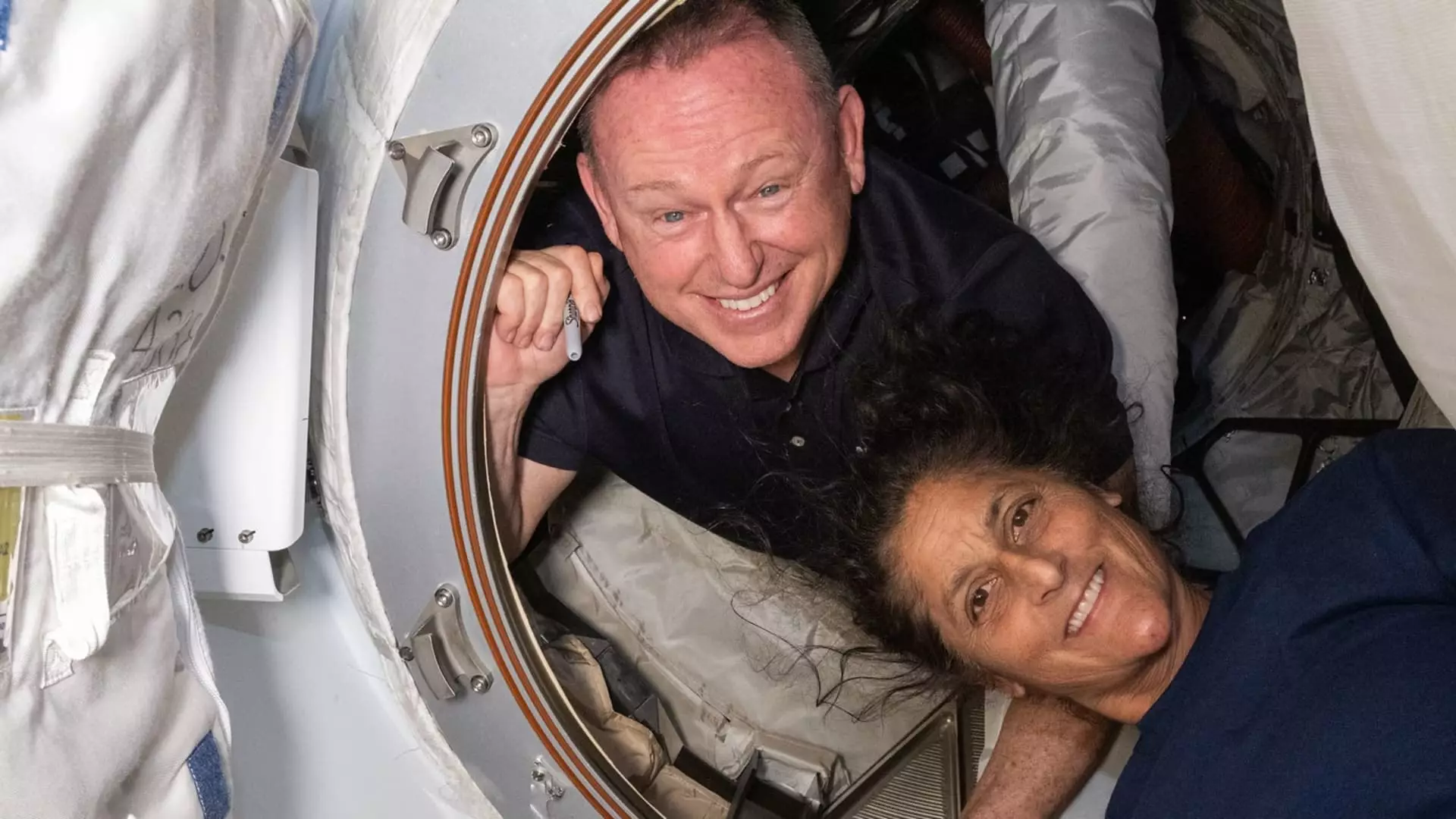In the vast silence of space, two American astronauts learned a harsh lesson: even the greatest scientific endeavors can fall prey to stubborn technical failures. NASA’s astronauts Butch Wilmore and Suni Williams were thrown into an enduring saga when their planned nine-day mission aboard Boeing’s Starliner spiraled into a protracted nine-month ordeal. The malfunctioning capsule left these seasoned space travelers adrift in a web of delays and uncertainties, raising troubling questions not just about technology, but about the human cost of progress versus safety.
The Nightmarish Failings of Boeing’s Starliner
Imagine launching into the cosmos, only to find that the vehicle intended to bring you back is incapable of doing so. This is precisely what happened in the case of the Starliner capsule “Calypso,” which suffered thrust problems during docking operations—an issue that catalyzed their extended stay on the International Space Station (ISS). Boeing, a name synonymous with aviation excellence, seemingly stumbled when it mattered most. The implications of such a critical failure cannot be overstated; with more than $2 billion reportedly lost on the Starliner initiative, questions arise about the viability and reliability of competition within commercial space travel. Has Boeing undermined its own credibility in a race driven by ambition?
Unfortunately, this situation also unveils the precariousness of trusting corporate giants like Boeing with human lives. In an age defined by rapid technological advancement, can we afford such spectacular missteps? The notion of safety must come first, for if our dreams are left hanging by a thread—or wires that fail—the cost may be far higher than financial losses.
NASA’s Unforeseen Political Landscape
Any discussion of space exploration inevitably becomes embroiled in the political arena, and the saga of Wilmore and Williams is no exception. When former President Trump publicly criticized NASA’s launch timelines during their extended stay, he put an enormous political spotlight on their situation. This kind of rhetoric is indefensible; it summons an uncomfortable alliance between political agendas and the safety of our astronauts. The insinuation that these brave individuals were being ‘stranded’ for political gain does a disservice to both the mission and the human spirit.
In an era where science should be free from the clutches of partisan politics, it is disheartening to witness this narrative take shape. The reality is that Wilmore and Williams were simply doing their jobs, wrapping themselves into the rhythm of routine experiments and maintenance, much like other astronauts before them. While Williams expressed excitement about eventually seeing her family and dogs, one must wonder what toll this extended separation took on their mental well-being.
The Rebirth of Crew Missions: SpaceX to the Rescue
Evaluating the entire fiasco ultimately leads us to SpaceX, a company that has proven its mettle repeatedly. To mitigate the ramifications of Boeing’s shortcomings, NASA pivoted to a SpaceX Dragon capsule for Wilmore and Williams’ return, demonstrating a resilience in collaboration that’s refreshing. This marvel of engineering successfully filled a glaring gap, showcasing how competition can sometimes be the bedrock of innovation.
However, it raises an important question: are we overly reliant on private enterprises to facilitate such monumental tasks? As SpaceX continues to rise, will Boeing find its footing again, or are we witnessing an inevitable shift in the landscape of crewed space travel? The risks and benefits appear intricately intertwined—pushing forward the frontier of exploration while demanding accountability from corporate players.
The Cost of Delays: Human Experiences in Space
As Wilmore and Williams finally prepare for their return, it’s crucial to remember that astronauts like them are more than just names adrift in a mechanical journey. They are representatives of human resilience, grappling with a system that, while profoundly remarkable, is also imperfect. Their extended stay, despite being a technical nightmare, provided valuable contributions to science, and perhaps even a touch of serendipity.
Williams’ resilience highlighted the spirit inherent in astronauts. The camaraderie forged in those months underscores the importance of human connection amid adversity. They proved that while technology may fail, the human will to adapt and thrive is an unwavering constant.
In the end, our fascination with space travel must not obscure the complexities involved, nor trivialize the efforts of those who bravely venture there. The situation begs a deeper reflection about our mechanisms of advancement: should we champion competition for innovation, or prioritize unity in the face of adversity? As the future beckons, asking such questions may well shape a more sustainable approach to exploring the final frontier.

